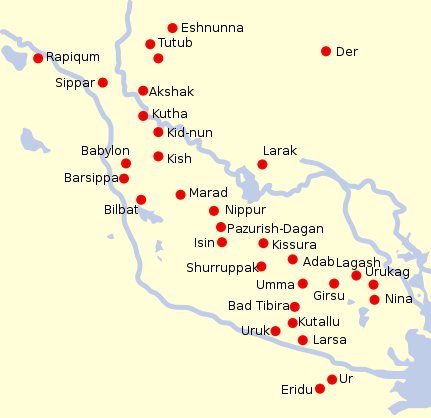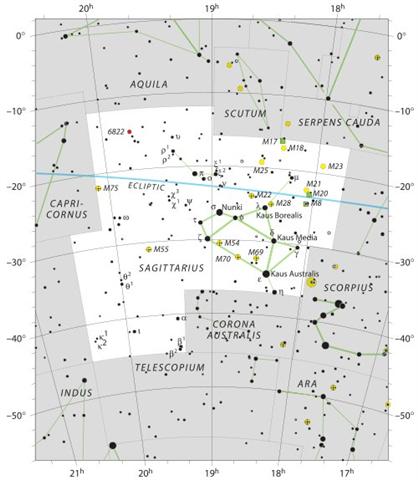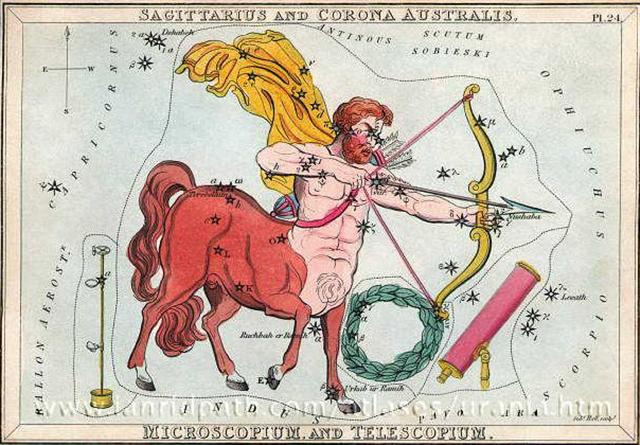3. The modern view of Sagittarius is different from that of the past. ... The 19th manzil lay in the vacant space from the upper part of the figure toward the horns of the Sea-Goat, and was known as Al Baldah, the City, or District, for this region is comparatively untenanted. It was marked by one scarcely distinguishable star, probably π, and was bounded by six others in the form of a Bow, the Arabs' Kaus, which, however, was not our Bow of Sagittarius ... Instead of an Archer the current popular view is a Teapot (not mentioned by Allen):
And in the version of Urania's Mirror (c.1825 A.D.) the Kaus stars (λ, δ, and ε Sagittarii) are not used for the bow:
By the way, Nusakan is not a star in Corona Australis - the constellation close to the lower end of the Archer's Bow - but a star in Corona Borealis. Nusakan is not in the 20th but in the 16th hour. The Sagittarius star adjoining Corona Australis in the picture above is η:
The 'platter' is 'broken' 42.9 days earlier than η Sagittarii (at glyph 214). Currently X-mas is marked by the heliacal rising of the Kaus stars. What has made the Teapot image popular? It can hardly (even in the limited minds of modern man) be only the resemblance in outline. There are 11 lines connecting its 8 stars. A pot of tea is mostly filled with liquid and π is at the back of the Archer's head from where his yellow cope is flowing, as if it corresponded to the city states in the Mesopotamian land between the rivers upstreams from Eridu:  ... The cope (known in Latin as pluviale 'rain coat' or cappa 'cape') is a liturgical vestment, more precisely a long mantle or cloak, open in front and fastened at the breast with a band or clasp ... ... The 19th manzil lay in the vacant space from the upper part of the figure toward the horns of the Sea-Goat, and was known as Al Baldah, the City, or District ...
|







